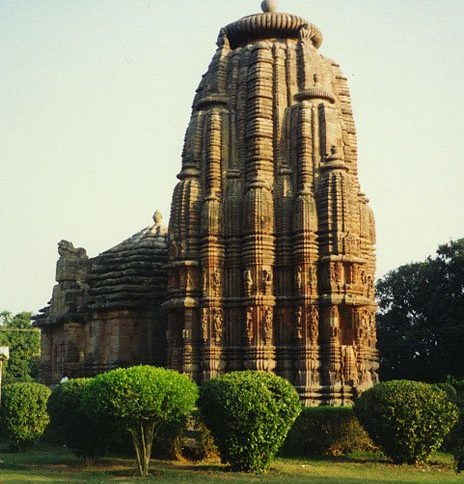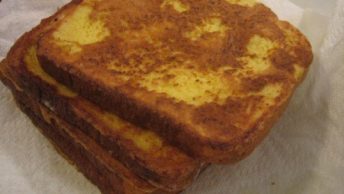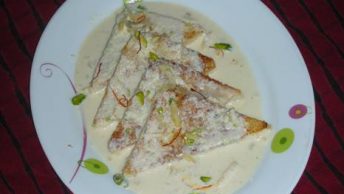The oldest surviving temple in Bhubaneswar is the Parasurameswara Temple. Built around 650 AD. this small temple marks the most effusive elements of the unique Kalinga style of temple architecture. Built within an enclosure, the Deula (tower like roof of the sanctum) is conical in shape and faces the west. It is made up of discrete horizontal levels which curve inwards as they meet the pinnacle, surmounted by a cushion-shaped amlaka and kalash.The front face of the tower has prominent arched windows and sculpted motifs.
The Jagamohana or pidha deula (porch like hall) instead of being a stepped pyramid, is a rectangular structure with a terraced roof, sloping in two stages. The walls of the jagamohana are elaborately carved with sculptured panels and lattice windows. The west facing windows have a lively band of musicians and dancers carved on them. The main entrance to jagamohana also has a fine carving of domestic elephants capturing wild ones, to the left of the lintel. Set into the outer walls of the shrine, are sculpted scenes from mythological narratives, forming a repertoire of Saiva myths. On the South of the sanctum, at eye level in the middle of tower, is a superb four armed pot bellied Ganesha seated on a simhasana (throne) , with his trunk touching a bowl of laddus (balls of sweetmeat) held in his lower left hand, while his upper left holds a parasu (hatchet); Karttikeya in the Southern niche with a peacock (guzzling grain at his master’s feet), holding a spear in his left hand and a fruit in his right; the lintel above this niche illustrates the marriage of Shiva and Parvati; to their right are Agni (fire), the kneeling figure of Brahma and next to Brahma is Surya. The temple has a dancing eight-armed Ardhanarishvara. The upper male arms hold a lute and akshamala, while the upper female ones hold a mirror and a book; the others arms are broken.
Among the notable friezes that line the North wall of the jagamohana are the sapta matrikas (seven mother goddesses), with Chamunda (Shiva’s consort goddess Durga in her terrifying aspect); Ganesha having a human visage face with a trunk growing from his chin; and several deities of the Brahmanical pantheon. The temple is dedicated to Shiva though only two of the three original idols survive. The Sahasralingam, in the north-west corner of the courtyard is decorated with a thousand miniature versions of itself. Representing an icon in multiplicity is intended to show the enormous power of the multiplied object.
The temple typifies the stage of the Saiva Pasupata Sect, illustrated by the frequent representation of Lakulisa. He is sculpted in Buddha-like form, with four disciples at his feet as shown on the last side of the tower, while on the West, above the relief of Nataraja, he looks like the meditating Buddha. The verandah has projecting moulding topped by a recessed frieze. The frieze has mostly amorous couples, separated by panelled jalis, and vidalas (a rampant lion, with head swung backwards, springing over a crouching elephant) at corners, a very typical symbol of the beleaguered Buddhist faith.







